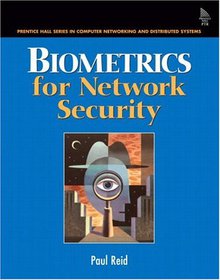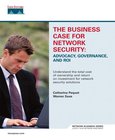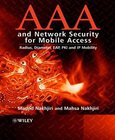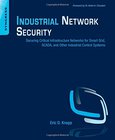Biometrics for Network Security

Book Details:
| Publisher: | Prentice Hall PTR |
| Series: | Prentice Hall |
| Author: | Paul Reid |
| Edition: | 1 |
| ISBN-10: | 0131015494 |
| ISBN-13: | 9780131015494 |
| Pages: | 288 |
| Published: | Dec 30 2003 |
| Posted: | Nov 19 2014 |
| Language: | English |
| Book format: | CHM |
| Book size: | 1.11 MB |
Book Description:
The complete guide to implementing biometric security solutions for your networkNetwork security has become the latter-day equivalent of oxymoronic terms like "jumbo shrimp" and "exact estimate." Newspaper headlines are routinely peppered with incidents of hackers thwarting the security put forth by the government and the private sector. As with any new technology, the next evolution of network security has long languished in the realm of science fiction and spy novels. It is now ready to step into the reality of practical application.In Biometrics for Network Security, biometrics security expert Paul Reid covers a variety of biometric options, ranging from fingerprint identification to voice verification to hand, face, and eye scanning. Approaching the subject from a practitioner's point of view, Reid describes guidelines, applications, and procedures for implementing biometric solutions for your network security systems. Coverage includes: An introduction to authentication technologies and biometrics Dealing with privacy issues Biometric technologies, including finger, hand geometry, handwriting, iris, retina, voice, and face Security concerns related to biometrics, including attempts to spoof or fake results Deployment of biometric security systems, including vendor selection and roll out procedures Real-life case studies For security, system, and network administrators and managers, as well as anyone who is interested in the application of cutting-edge biometric technology, Biometrics for Network Security will prove an indispensable addition to your library!
Download Link:
Related Books:
The Business Case for Network Security
Advocacy, Governance, and ROI
Understand the total cost of ownership and return on investment for network security solutions Understand what motivates hackers and how to classify threats Learn how to recognize common vulnerabilities and common types of attacks Examine modern day security systems, devices, and mitigation techniques Integrate policies and personnel with security equipment to effectively lessen security risks Analyze the greater implications of security breaches facing corporations and executives today Understand the governance aspects of network security to help implement a climate of change throughout your organization Learn how to qualify your organization's aversion to risk Quantify the hard costs of attacks versus the cost of security technology investment to ...
AAA and Network Security for Mobile Access
Radius, Diameter, EAP, PKI and IP Mobility
AAA (Authentication, Authorization, Accounting) describes a framework for intelligently controlling access to network resources, enforcing policies, and providing the information necessary to bill for services.AAA and Network Security for Mobile Access is an invaluable guide to the AAA concepts and framework, including its protocols Diameter and Radius. The authors give an overview of established and emerging standards for the provision of secure network access for mobile users while providing the basic design concepts and motivations.AAA and Network Security for Mobile Access:Covers trust, i.e., authentication and security key management for fixed and mobile users, and various approaches to trust establishment.Discusses public key infrastructures an...
Industrial Network Security
Securing Critical Infrastructure Networks for Smart Grid, SCADA and Other Industrial Control Systems
Industrial Network Security: Securing Critical Infrastructure Networks for Smart Grid, SCADA, and Other Industrial Control Systems describes an approach to ensure the security of industrial networks by taking into account the unique network, protocol, and application characteristics of an industrial control system, along with various compliance controls. It offers guidance on deployment and configuration, and it explains why, where, and how security controls should be implemented. Divided into 11 chapters, the book explains the basics of Ethernet and Transmission Control Protocol/Internet Protocol (TCP/IP) networking communications and the SCADA and field bus protocols. It also discusses industrial networks as they relate to "critical infrastruc...
2007 - 2021 © eBooks-IT.org



